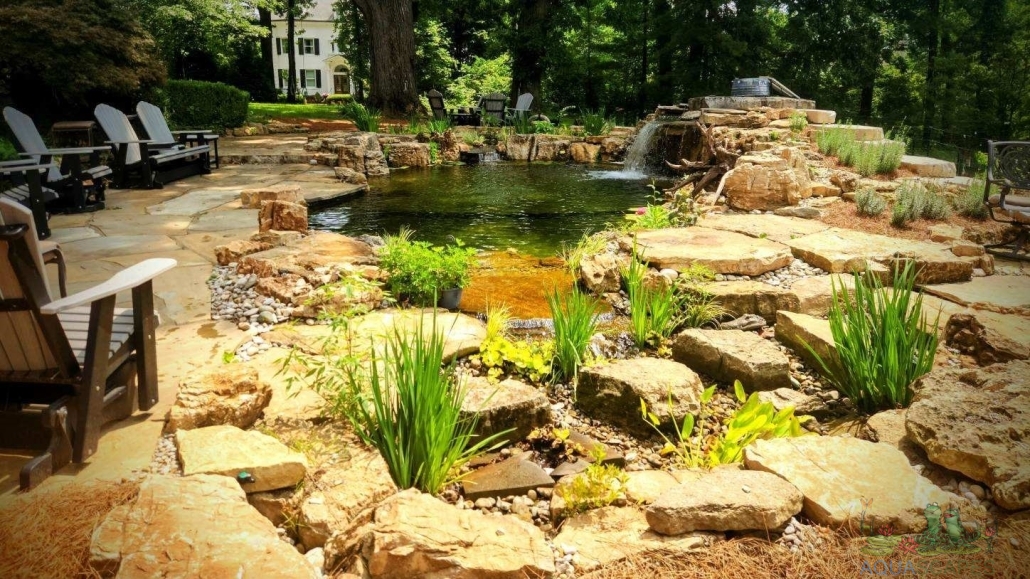What do I need before winterizing my water garden?
Winterize my water garden tips and tricks: Winterizing your water garden is crucial to ensure its inhabitants’ well-being and preserve the ecosystem‘s overall health. Here’s a comprehensive checklist to guide you on what you need before winterizing your water garden:
Netting or Skimmer: Use a net or skimmer to remove fallen leaves, debris, and any organic matter from the water’s surface. This prevents the accumulation of decaying material, which can negatively impact water quality.
Trim and Prune Aquatic Plants: Trim back dead or decaying foliage from water lilies, submerged plants, and marginal plants. Remove any overgrown vegetation that could decompose and release harmful substances into the water.
Adjust Water Chemistry: Test the water for pH, ammonia, nitrites, and nitrates. Adjust water parameters if necessary to ensure a stable environment for fish and other aquatic life during winter.
Remove Floating Plants: Remove floating plants like water lettuce or water hyacinth, as they may not survive winter conditions. Store them indoors in a container with water to prevent them from freezing.
Pump and Filter Maintenance: Clean and inspect the pump for debris. Consider installing a pump sock or cage to prevent it from clogging. Let’s continue the winterize my water garden article.
Aerate the Water: Install an aeration system, such as an air pump with diffusers, to keep a portion of the water surface from freezing completely. This helps maintain oxygen levels for fish and beneficial bacteria.
Add Cold Water Bacteria: Introduce beneficial bacteria specifically formulated for cold water. This helps break down organic matter and reduces nutrient buildup during winter.
Install a De-Icer or Heater: In colder climates, prevent the water surface from freezing by using a floating de-icer or submersible heater. This ensures gas exchange and prevents ice from trapping harmful gases.
Fish Preparation: This is important when it’s time to winterize my water garden. Gradually switch to a lower-protein fish food as temperatures drop. Feeding less frequently or stopping altogether when temperatures are consistently low helps prevent digestive issues for fish during winter.
Remove and Store Equipment: Disconnect and remove hoses, fountains, and any non-submersible equipment. Store them indoors to prevent damage from freezing temperatures.
Insulate and Protect: Install a pond net or frame to catch falling leaves and protect the water surface. This also provides a layer of insulation against extreme temperature fluctuations.
Emergency Supplies: Keep a backup de-icer or heater on hand in case of equipment failure during winter. This ensures a continuous opening in the ice for gas exchange. Winterize my water garden has never been easier!
Documentation: Keep notes on water conditions, maintenance activities, and any adjustments made during the winterizing process. This information will be valuable for future reference.
Check Local Regulations: Be aware of any local regulations or guidelines regarding winterizing water features. Some regions may have specific recommendations or restrictions to follow.
Secure Pond Netting: If you live in an area with significant leaf fall, secure heavy-duty pond netting over the water’s surface. This provides an extra layer of protection against debris and helps make the cleanup process more manageable.
Prepare for Temperature Fluctuations: Monitor water temperatures regularly, especially in areas with unpredictable weather. Sudden temperature fluctuations can affect the well-being of fish and the overall health of the pond.
Check for Wildlife: Before completely winterizing, carefully inspect the water garden for any wildlife, such as frogs or turtles. Create a suitable habitat for them if they are present, ensuring their survival during winter.
Emergency Preparedness: Have an emergency kit on hand, including a pond-safe de-icer, an extra air pump, and any necessary tools. Being prepared for unexpected issues ensures you can quickly address any problems that may arise.
Educate Yourself: Continue educating yourself on winter pond care. Stay informed about best practices and any new developments in the field to enhance the health and vitality of your water garden.
Regular Monitoring: Even after winterizing, periodically check the water garden throughout the winter. Monitor the water level, ensure the de-icer or heater is functioning correctly, and inspect the overall condition of the pond.
Spring Uncovering Plan: Develop a plan for uncovering the pond in spring. Consider a gradual approach, removing insulation and allowing the pond to acclimate to rising temperatures before fully exposing it.
Community and Online Forums: Engage with Others: Join online forums or local community groups related to pond keeping. Sharing experiences and learning from others can provide valuable insights and solutions to common winterizing challenges.
Weather Forecast Awareness: Keep an eye on weather forecasts, especially during periods of extreme cold. Be prepared to adjust your winterizing strategy based on the specific weather conditions in your area. Now for more winterize my water feature tips!
Evaluate Winter Impact: Post-Winter Assessment: Once spring arrives, evaluate the impact of winter on your water garden. Assess the health of plants, the water’s condition, and the fish’s well-being. Make any necessary adjustments based on your observations.
Documentation Update: Update your pond documentation with observations made during winter and any adjustments made during the post-winter assessment. This information will guide future winterizing efforts and contribute to the long-term health of your water garden.
By following this comprehensive checklist and remaining attentive to the unique needs of your water garden, you set the stage for a successful winterizing process and a thriving aquatic environment when spring returns. Regular monitoring, preparedness, and ongoing education ensure that your water garden remains beautiful and tranquil throughout the changing seasons.
Check out our store for all your water gardening needs! Aquascape products are Aquascape Inc. Certified.
Thanks for reading at Meyer Aquascapes! We hope you’ve enjoyed our post on garden pond design. Please leave a comment below if you liked it or have any questions. We’d love to hear from you! Thanks for stopping by!



